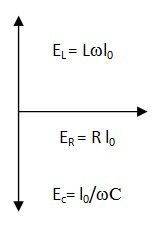Uses Of Operator J
Uses Of Operator J Assignment Help | Uses Of Operator J Homework Help
Uses of Operator j in Study of A.C. Circuits
The operator j is defined as a quantity which is numerically equal to √ (-1) and which represents the rotation of a vector through 90 degree in anti clockwise direction. The above facts about j are helpful in studying the A.C. circuits. We know that in A.C. circuits, EL and EC always lie at 90 in anticlockwise and clockwise direction respectively with respect to ER. Hence total emf of a circuit having L, C, R will beE = ER + jEL – jEC
Ordinarily a source of alternating e.m.f. E is denoted by E0 sin ωt.
This is actually the imaginary part of the complex form of alternating e.m.f.,
E = E0ejωt
The instantaneous current in the A.C. circuit has been expressed as I = I0 sin (ωt – Φ). This expression is the imaginary part of the complex current given by
I = I0ej(ωt – Φ)
Since the voltage across the inductor leads the current passing through it by 90 degree, the inductive reactance ωL can be written as jωL ZL = jωL = jXL.
Since the voltage across the capacitor lags the current passing through it by 90 degree, the capacitive reactance 1/ωC can be written as –j/ωC = 1/jωC. ZC = 1/jωC = – j/ωC = - jXC.
A complex impedance can be written as the sum of a real term and imaginary term which are to be called resistance and complex reactance respectively,
Z = R + jX
Where X = XL - XC is the effective reactance in the circuit.

For more help in Uses of Operator j in Study of A.C. Circuits click the button below to submit your homework assignment